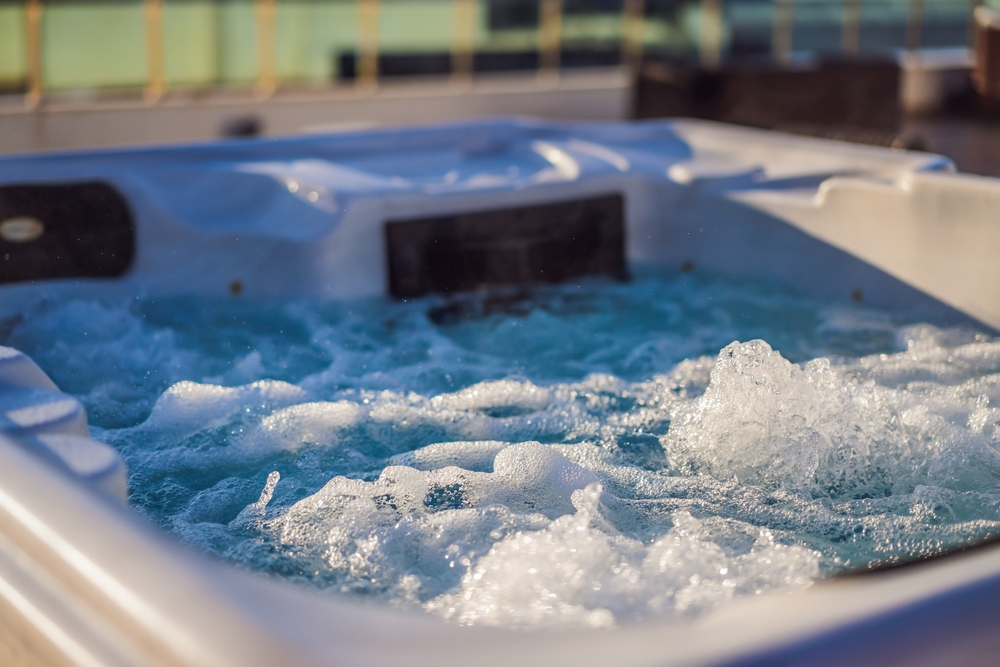Hot Tub Installation: A Step-by-Step Guide for Homeowners

Installing a hot tub in your backyard can be a game-changer for relaxation, entertainment, and even property value. Whether you’re dreaming of a cozy spa-like retreat or an inviting spot for weekend gatherings, proper planning and installation are key.
Preparing for Your Hot Tub Installation
Before breaking out the tools and booking your electrician, it’s essential to lay the groundwork for a smooth installation process. Preparation will help avoid costly delays, ensure safety, and protect your investment for years to come.
Choosing the Best Location for Your Hot Tub
Finding the perfect spot for your hot tub isn’t just about aesthetics—you also need to think about safety, privacy, convenience, and long-term maintenance. Here are some factors to consider:
- Proximity to the house: Installing your hot tub close to a door will make it easier to access, especially during colder months.
- Level surface: Ensure the location is on a flat, stable surface. A reinforced concrete pad or a custom-built deck is ideal.
- Privacy: Use fencing, landscaping, or screens to create a secluded environment.
- Sun and wind exposure: Choose a site that gets a mix of sun and shade while being shielded from strong winds.
- Drainage: Avoid areas prone to water pooling. Proper drainage will help preserve the foundation and hot tub base.
Electrical and Plumbing Considerations
Most hot tubs require a 220V electrical connection and a dedicated GFCI (Ground Fault Circuit Interrupter) breaker. Hiring a licensed electrician is critical to meet local codes and ensure safe operation. Plumbing considerations are generally minimal, as most hot tubs are self-contained systems filled with a garden hose. However, proper drainage and nearby water access are important to streamline setup and maintenance.
Tips:
- Verify that your home’s electrical panel can handle the additional load.
- Obtain all necessary permits in accordance with local building codes.
- Schedule the electrical work before the tub arrives to avoid delays.
Step-by-Step Hot Tub Installation Guide
With preparation out of the way, it’s time to move on to the main event: installing your hot tub. While many homeowners choose to hire professionals, understanding each step can help you oversee the process and ensure everything is done correctly.
Step 1: Site Preparation
Before your hot tub is delivered, your chosen site must be ready:
- Lay a concrete pad or build a reinforced deck. The base must support the weight of the hot tub when full of water and occupants.
- Ensure proper access. Clear pathways for delivery. Measure gates, fences, and other obstructions.
- Install electrical conduit and outlets. Your electrician will handle this part, ensuring all wiring complies with NEC and local standards.
Step 2: Delivery and Placement
Most hot tubs are delivered via flatbed trucks and moved into place using a dolly or crane.
- Inspect the unit upon arrival for any signs of damage.
- Position the hot tub according to your layout plan.
- Check for levelness using a carpenter’s level to ensure the tub sits evenly.
Step 3: Electrical Hookup
This phase must be handled by a licensed electrician. Key tasks include:
- Connecting the hot tub to your home’s electrical system.
- Installing the GFCI breaker and testing it for safety.
- Verifying proper bonding and grounding.
Note: Some hot tubs also feature built-in lighting or entertainment systems, which may require additional connections.
Step 4: Filling the Hot Tub
Once wired and ready:
- Use a standard garden hose to fill the tub.
- Add the appropriate startup chemicals to balance water pH, alkalinity, and hardness.
- Check for leaks around fittings and plumbing.
Step 5: System Check and Heating
Power on the hot tub and verify all systems are operational:
- Run the jets to ensure proper flow and circulation.
- Set the thermostat to your desired temperature.
- Monitor the heating process, which may take several hours.
Consult the owner’s manual to identify any specific startup sequences or required settings.
Step 6: Add Final Touches
Once operational, consider enhancing the area with:
- Steps and handrails for safety.
- Outdoor lighting for ambiance and usability at night.
- Spa covers and lifters to protect your investment.
- Storage benches or hooks for towels and accessories.
Common Mistakes to Avoid
Even with the best intentions, homeowners can make costly errors during hot tub installation. Avoid these common pitfalls:
Ignoring Local Codes and Permits
Failure to follow building codes can result in fines or even the forced removal of your hot tub. Always check with your local permitting office before beginning installation.
Choosing an Inadequate Foundation
Placing a hot tub on a weak or sloped surface can cause structural damage or safety hazards. Always invest in a durable, level base that meets load requirements.
DIY Electrical Work
Wiring a hot tub is not a DIY task. Improper electrical connections can result in serious injury, fire, or damage to the unit. Hire a qualified professional for all electrical work.
Improper Chemical Use
Adding too many or the wrong types of chemicals can damage your spa components and pose health risks. Always use spa-specific chemicals and test your water regularly.
Neglecting Regular Maintenance
Failure to clean filters, check water chemistry, or drain the tub periodically can lead to performance issues and shorten the life of your hot tub.
Post-Installation Maintenance Tips
Once your hot tub is up and running, consistent care will ensure it remains a luxurious retreat for years to come.
Weekly Maintenance
- Test water chemistry using strips or a digital tester.
- Adjust pH, alkalinity, and sanitizer levels as needed.
- Clean filters by removing and rinsing them with a hose.
- Inspect the cover for wear, damage, or mold.
Monthly Maintenance
- Deep clean filters using a spa filter cleaner.
- Wipe down the tub shell and cover with a non-abrasive cleaner.
- Inspect jets and fittings for signs of wear or blockage.
Quarterly Maintenance
- Drain and refill the tub. This prevents chemical buildup and maintains water clarity.
- Inspect and tighten plumbing connections as necessary.
- Lubricate O-rings and seals to maintain watertight integrity.
Seasonal Considerations
- Winterizing: If you do not use your hot tub in winter, drain all water, blow out pipes, and store the unit according to the manufacturer’s guidelines.
- Spring Startup: Thoroughly inspect the unit, refill, and test all systems.
Consistent attention will minimize costly repairs and ensure you get the most enjoyment from your investment.
Contact Us Today
A successful hot tub installation requires more than just setting it in place and filling it with water. From choosing the right location to navigating electrical needs and maintaining chemical balance, each step plays a vital role in creating a safe and relaxing spa experience.
If you’re looking for high-quality pool and hot tub products for your property in the Aspen area, turn to our team at Ajax Pool & Spa Aspen. With years of expertise and a reputation for exceptional customer service, we help homeowners just like you turn backyard dreams into reality. Whether you’re in the early planning stages or ready to install your hot tub, contact us today to get started!
